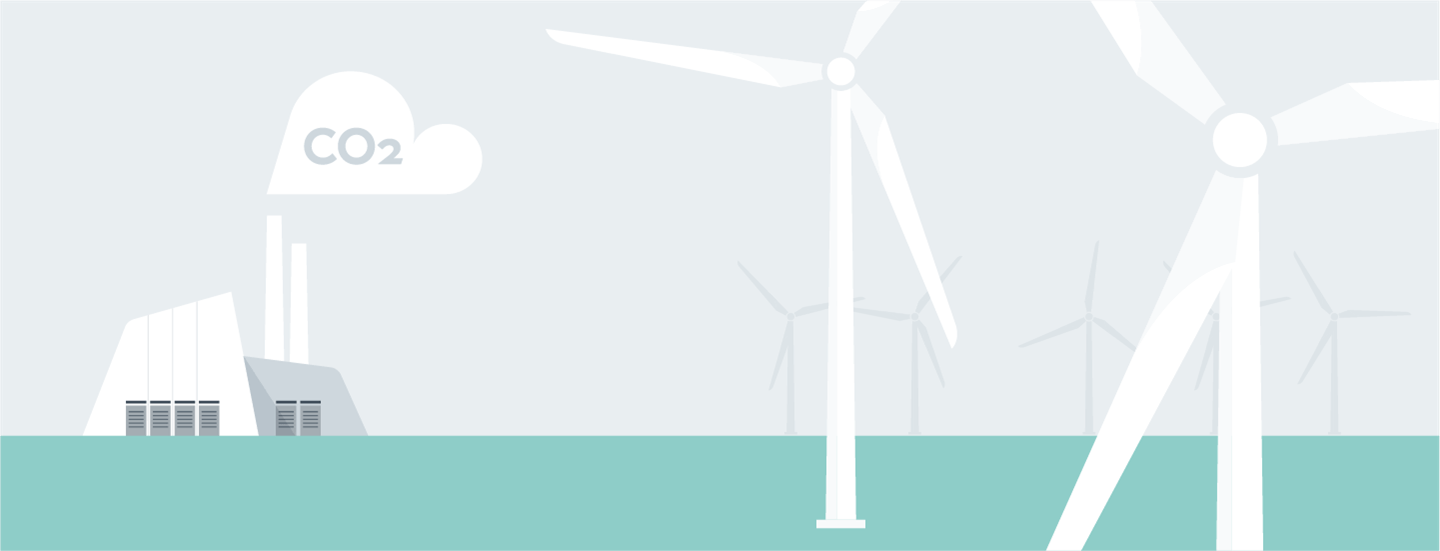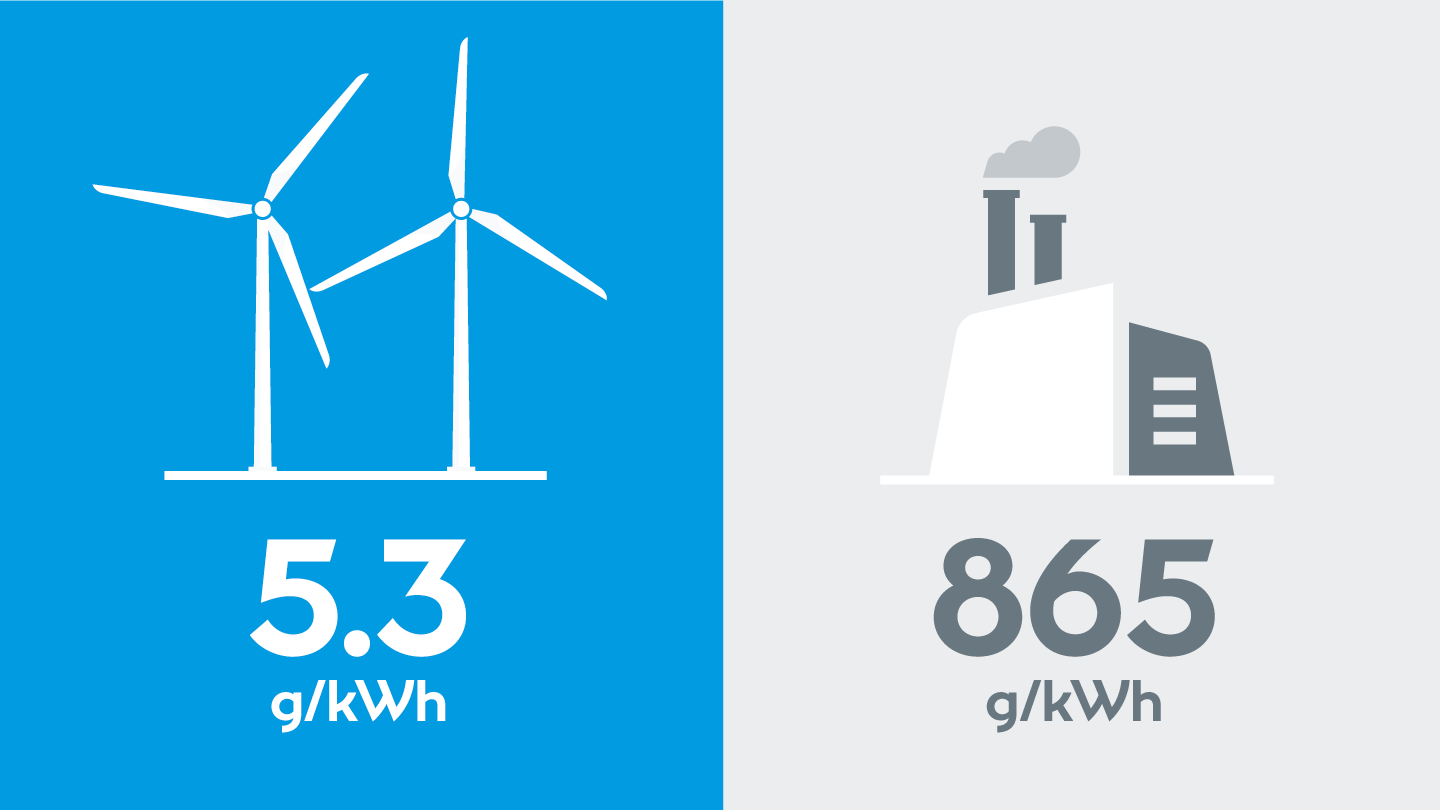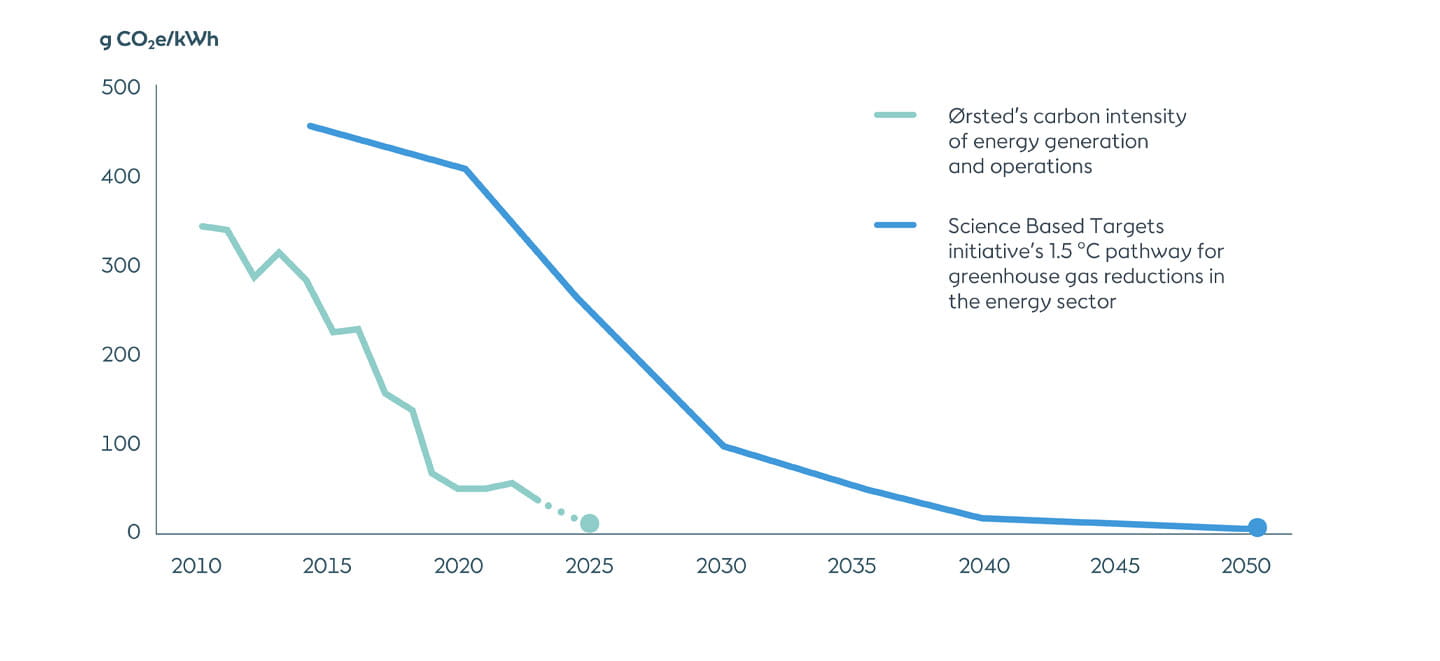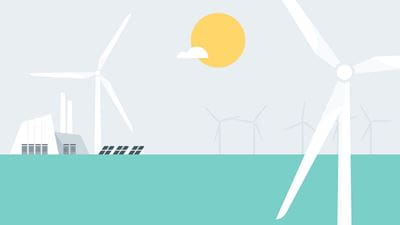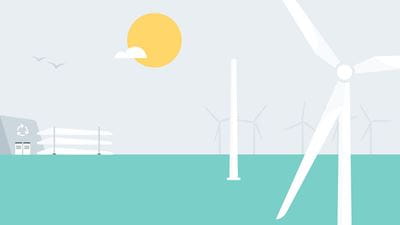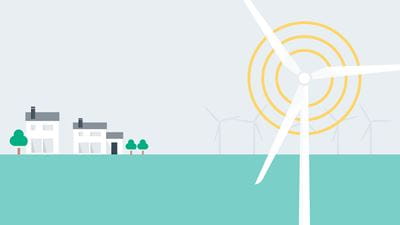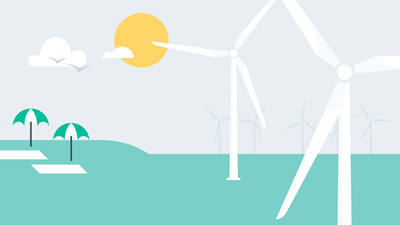99% lower emissions than fossil fuels
But most of these emissions only need to happen once for each wind turbine, which will be in service for at least 25 years. In this time, they will be producing electricity without emitting any more carbon dioxide, except for those emissions from the vehicles used for service and maintenance.
When you divide the total emissions associated with a wind turbine by the amount of electricity it will produce in its 25-year lifetime, it works out at about 5.3 g of carbon dioxide for every kilowatt hour (kWh) of electricity.1
By comparison, power generation based on fossil fuels involves burning more coal, oil, or gas for every kilowatt hour of electricity, on top of the one-off carbon emissions from construction and decommissioning. For coal, this adds up to approximately 865 g per kWh.
In other words, switching from coal- fired generation to wind power can reduce the carbon emitted from energy production by more than 99%.
